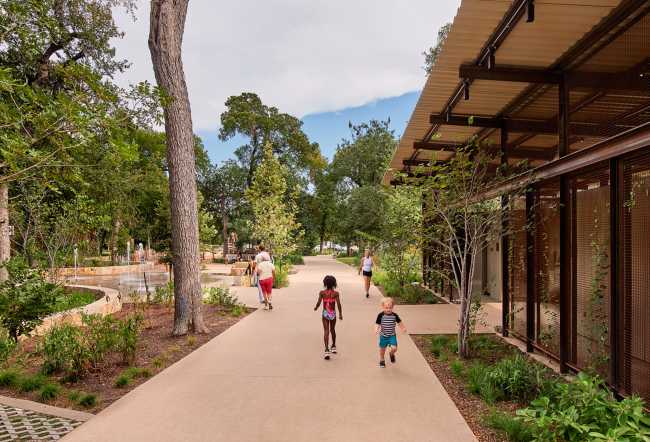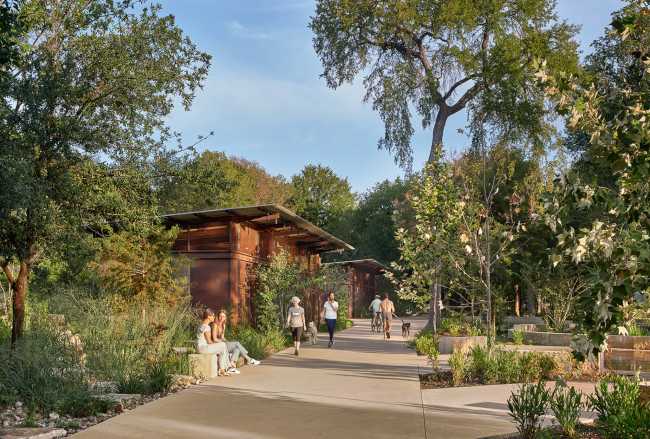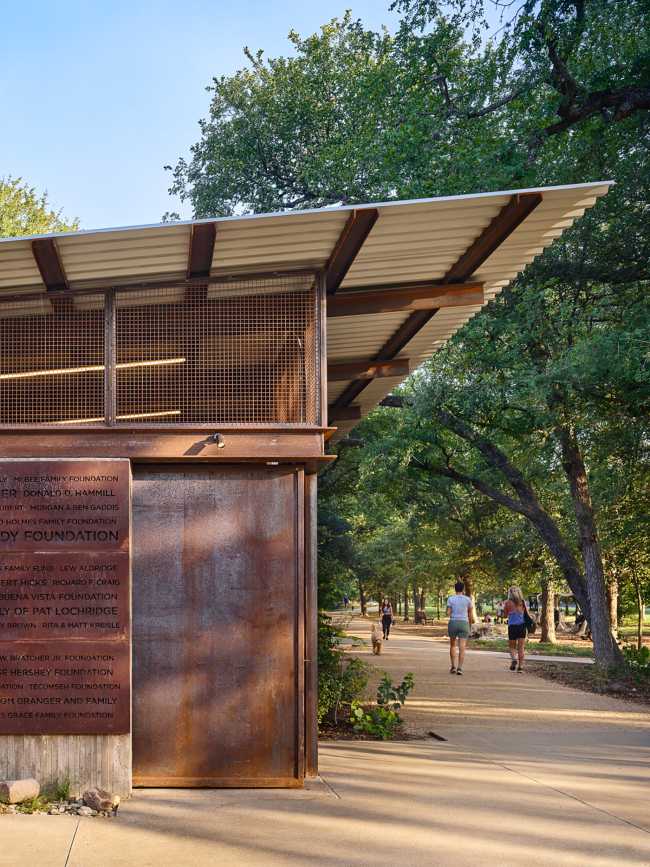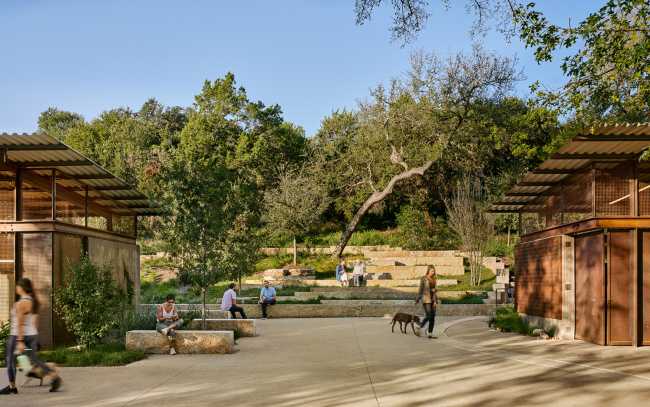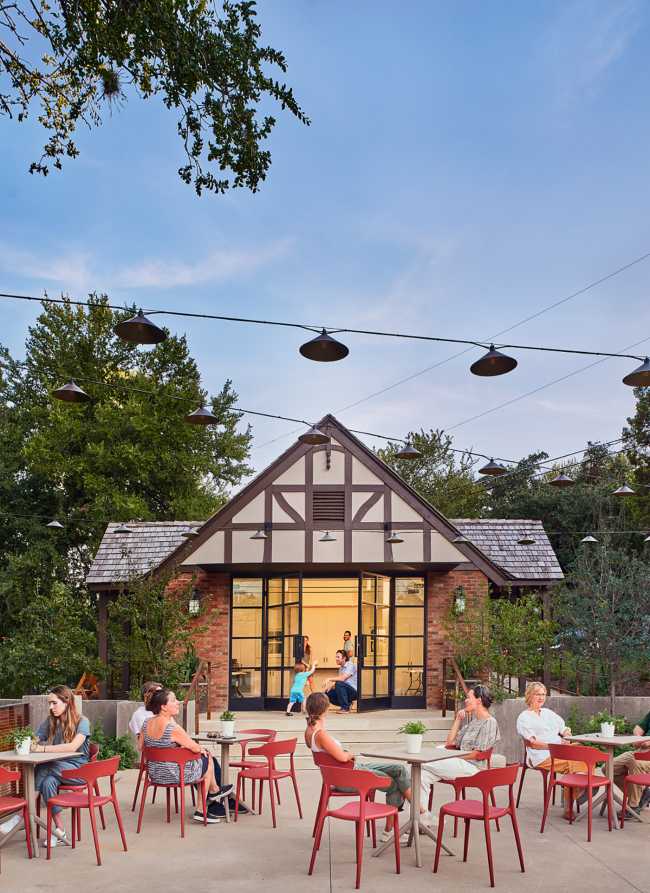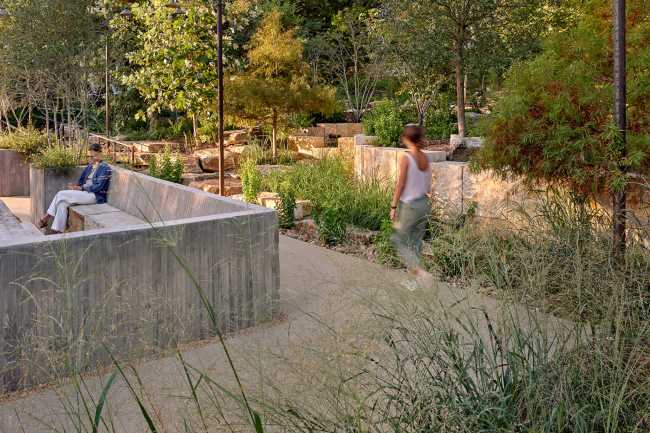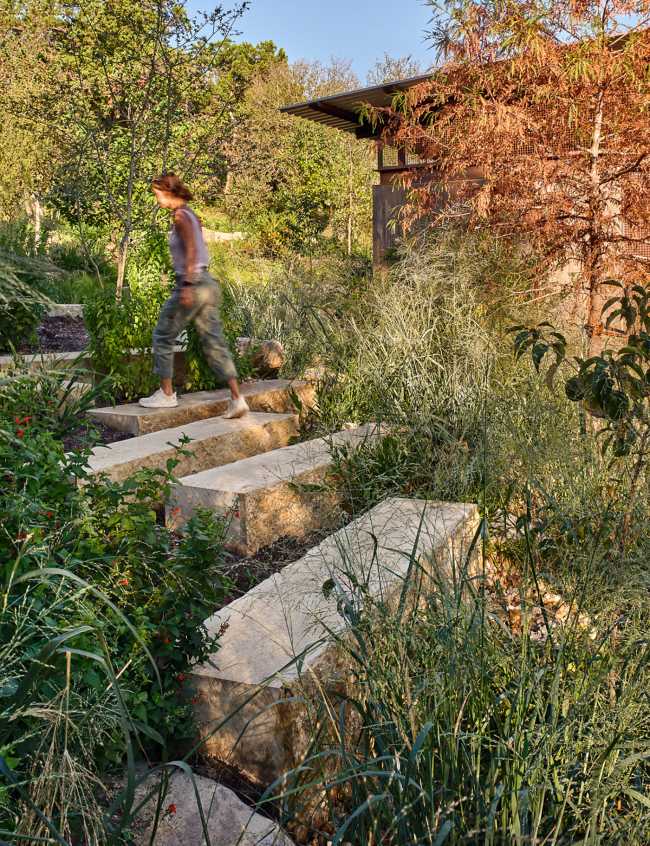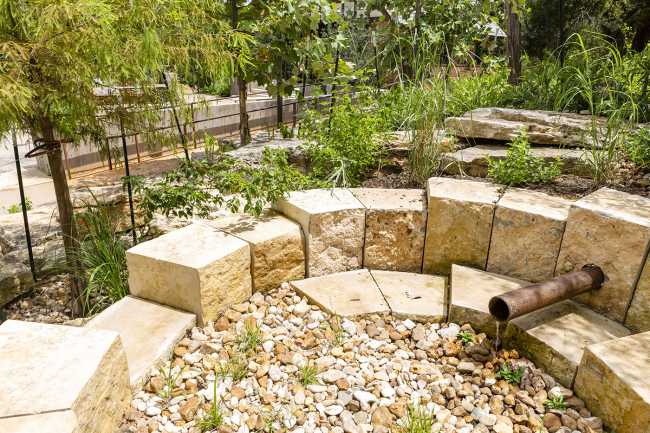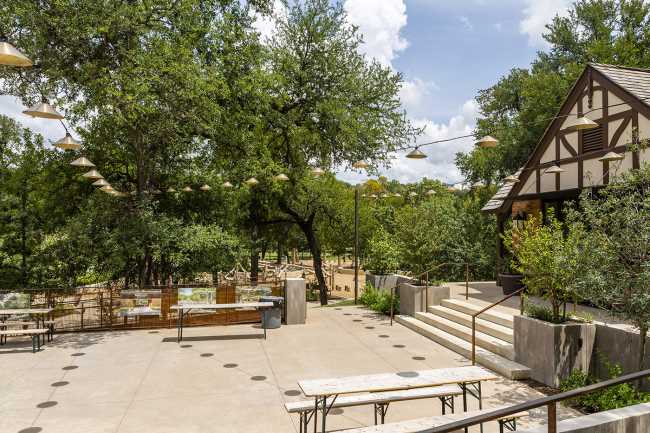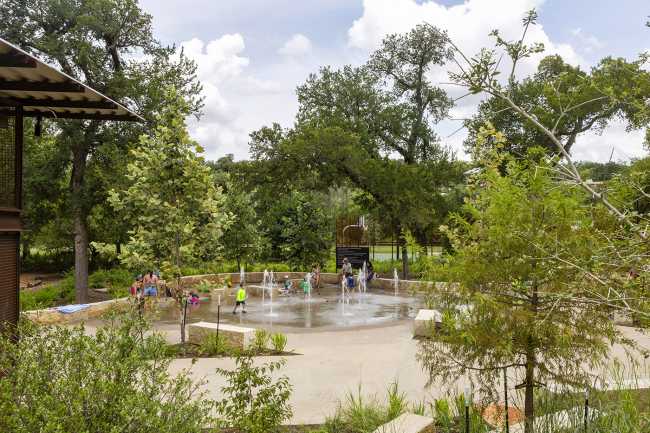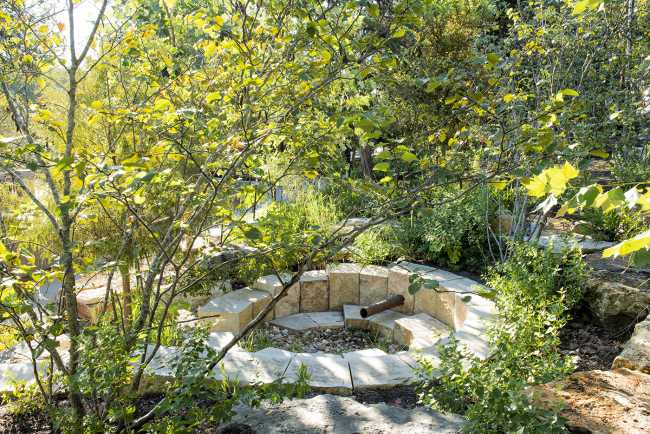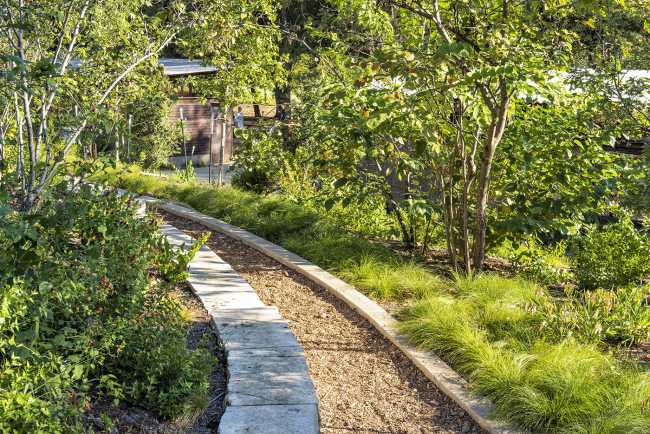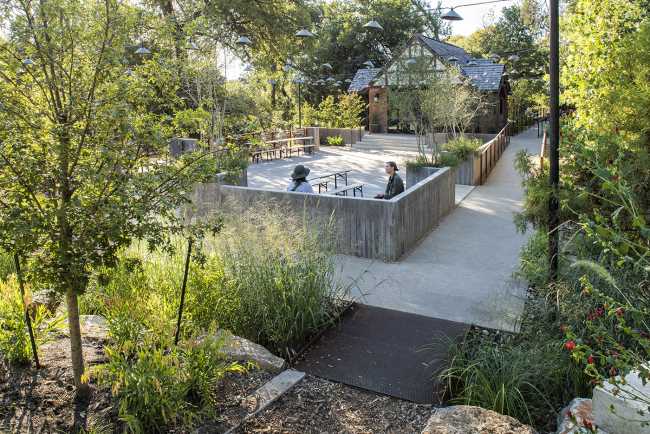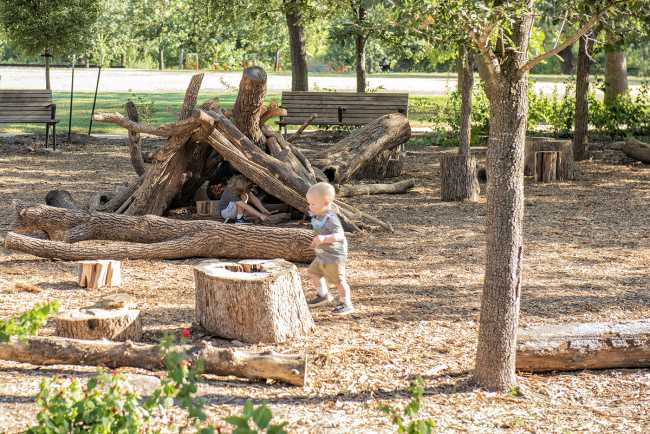The first part of the redevelopment of Pease Park is to clear the entrance of the green area from outdated encumbrances. Framed by the historic stone arches at the intersection of Parkway and Kingsbury Street, a new limestone sign invites visitors. The removal of telephone poles and some prefabs returns the lawn to the community, which can use it at will, play Frisbee, do yoga and offers expansive interior views of the park and a connection to the adjacent creek. This welcoming gateway, framed by the historic stone arches at the intersection of Parkway and Kingsbury Street and marked by a new limestone sign flanked by large oak trees, makes the park and its amenities more accessible to all visitors
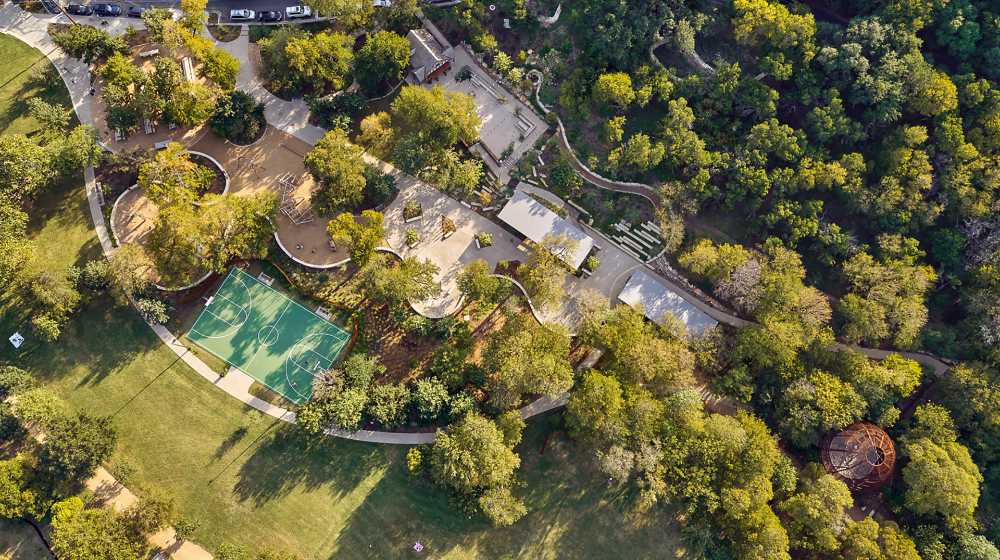

Restyling Austin's historic public green space. The Pease Park
Located along the banks of Shoal Creek in downtown Austin and known as the city's first park, the 84-acre Pease Park has a rich history that has always been a part of the residents' history. The first phase of rehabilitation, preservation, and enhancement of the park, completed by the architectural firm Clayton Korte in collaboration with Ten Eyck Landscape Architects and Mell Lawrence Architects, involves the southernmost tip of the park, affectionately referred to as the park's "recreational heart and cultural soul"
- #America
- #United States
- #Architectures
- #New construction
- #Building recovery
- #Outdoor
- #Park
- #Metal
- #Wood
- #Stone
- #Restyling
- #Architecture
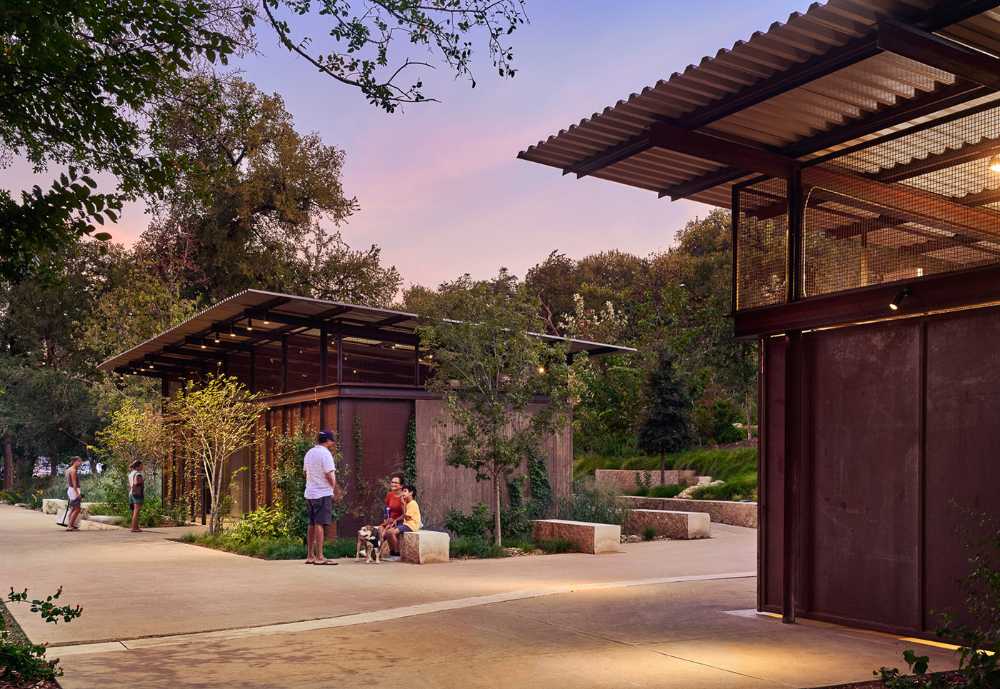
The park's new design by the team of architects and landscapers interweaves existing vegetation with a robust program of facilities and services that include rental spaces for events, new restrooms and storage, a treetop observation pod, natural playgrounds, a basketball court, and an interactive water feature reminiscent of the area's karst aquifers. Existing features, including a densely wooded hillside, Civilian Conservation Corps picnic tables, and the historic 1920s Tudor Cottage, are preserved and improved to embrace the park's rich history
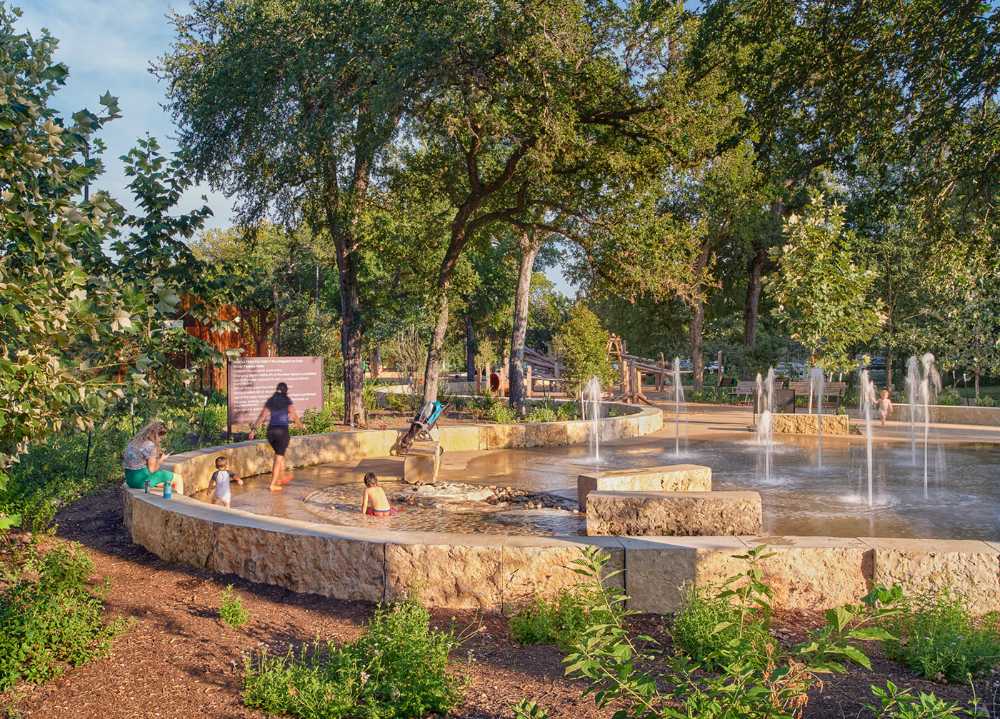
Built in the 1920s, the Tudor Cottage is one of the earliest buildings constructed in Austin and sits on a cliff overlooking the southern end of Pease Park. Originally designed to house restrooms, the cottage has been transformed into an event space: the interior walls have been removed to create a single room, and a new roof structure allows for a vaulted ceiling that increases the perception of the space while maintaining its original structure. A north-facing glazed opening connects the interior to a large terrace overlooking the park
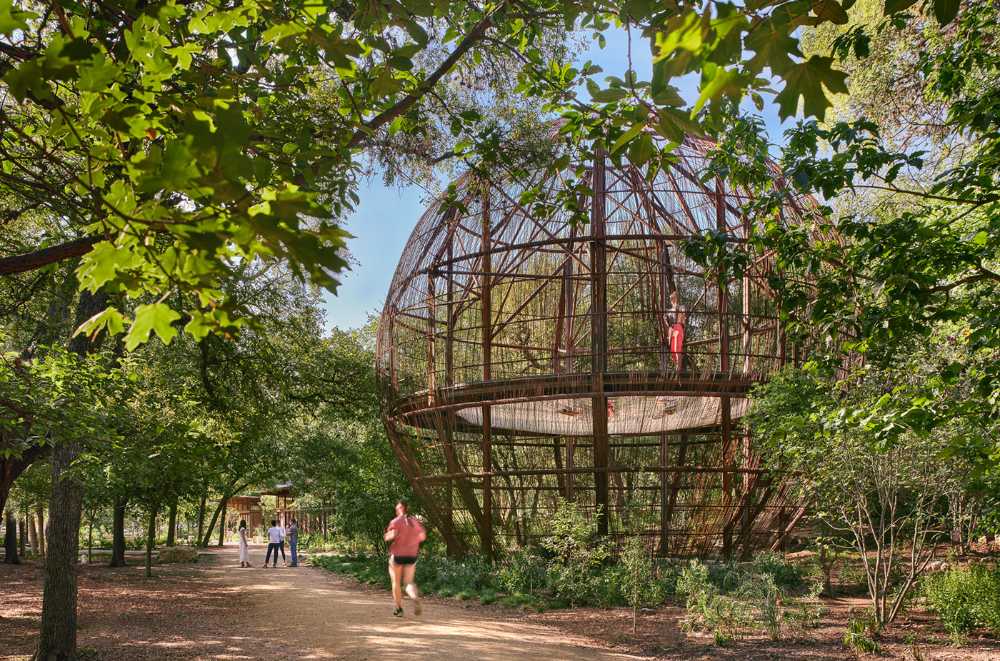
On the western edge of the park, two new wooden buildings enhance park amenities. Clad in steel mesh on which ivy will be allowed to grow and a color palette inspired by the landscape, the new volumes used as bathrooms and warehouse recede into the background. A new courtyard adjacent to the warehouse forms a shaded amphitheater ideal for gathering or resting. A new limestone ribbon wall visually and physically unifies the various exterior elements as it winds through the park. As it rises and falls in elevation, the wall transforms into steps on the hillside, a bench, and again becomes a band of color within the sidewalk. It also transforms into the aquifer-like water feature that refreshes park-goers in the summer months, symbolically highlighting the restored natural spring on the hillside of Tudor Cottage
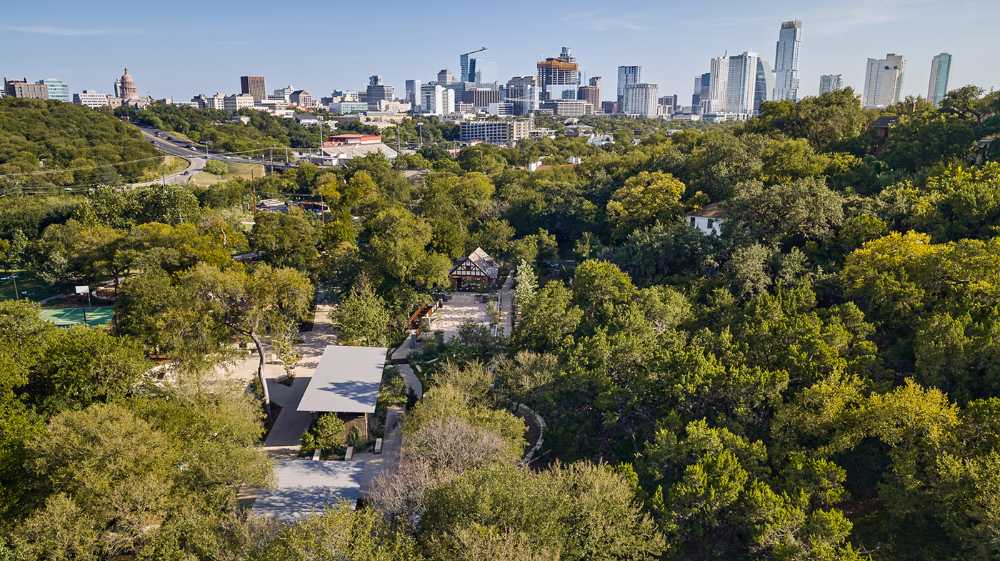
Gallery
Photo credits
Top image:Casey Dunn
Content Images: Casey Dunn
Gallery images:da 1 a 7 Casey Dunn - da 8 a 10 Brittany Dawn - da 11 a 14 Adam Barbe - 15 Ashley Nava

